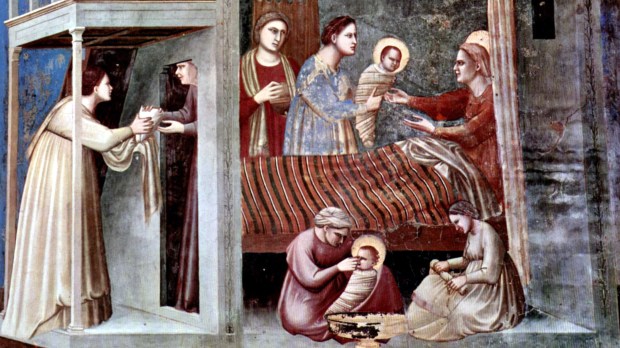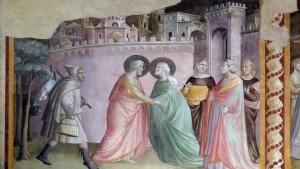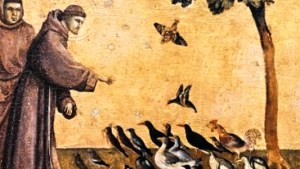Giotto di Bondone’s masterpiece, The Birth of the Virgin, is perhaps not as well-known as his noted St. Francis’ cycle. And still, this fresco alone is a testament to his skill in capturing the depth of theologically loaded religious narratives through art. This painting, which is part of the Scrovegni Chapel fresco cycle in Padua, depicts the birth of the Virgin Mary, one of the most significant events in Christian tradition.
According to Christian tradition, the birth of the Virgin Mary is a pivotal moment in the history of salvation. Mary’s parents, Joachim and Anne, had longed for a child but were barren. Whereas the story of Joachim and Anne is not mentioned in any of the canonical Gospels, it is found in apocryphal texts (particularly the Protoevangelium of James, but also Jacobus de Voragine’s Golden Legend and other popular accounts), so the narrative was well-known since the very early days of Christianity, and thus became part of Christian tradition. In a divine twist of fate, an angel appeared separately to Joachim and Anne, announcing that they would bear a child who would become the Mother of the Messiah.
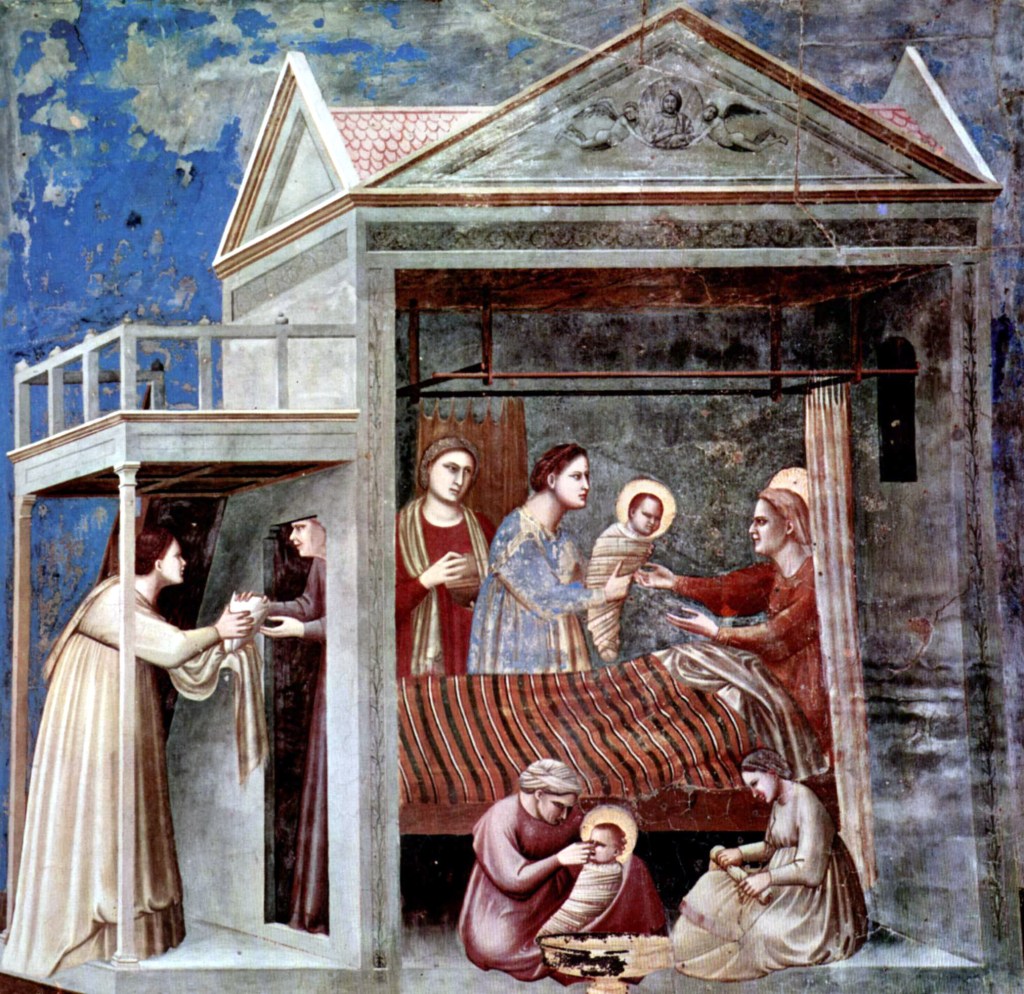
The dedication of the Scrovegni Chapel to the Virgin of Charity explains the presence of this cycle of Marian stories, which, added to those of her parents Joachim and Anne, constitute the most extensive depiction painted in Italy up to that time.
The scene of Mary’s birth takes place in the exact same home of St. Anne that appears in the panel of the Annunciation in the same cycle. It shows the elderly woman lying in her own bed, having just given birth, and receiving her swaddled daughter from a midwife, while a second is about to hand her something to eat. It has been speculated that the woman holding the newborn Mary (wearing a blue dress with gold beading) may be the wife of Enrico degli Scrovegni, the “owner” of the chapel.
But the scene also shows another two actions: At the bottom, two helpers have just given the newborn girl her first bath and swaddled her, while at the entrance to the dwelling, another fantesca (that is, a domestic worker) receives a package (most likely, cloths) from a woman dressed in white. Most of the time, these medieval images need to be read as if they were comic strips of sorts: One single panel can include two or three different actions and moments of time.
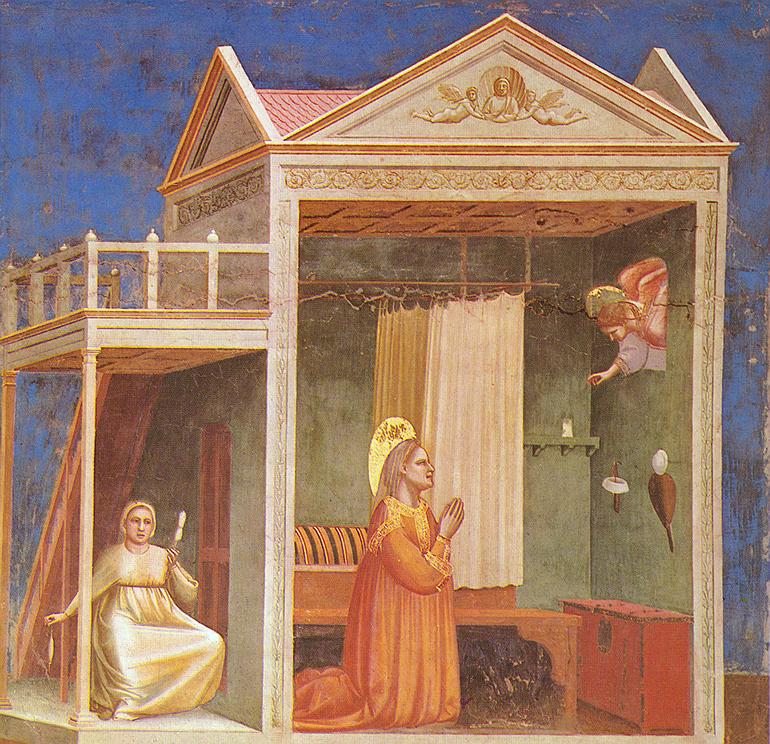
Since the Birth of the Virgin takes place in the very same house Giotto paints again in his panel for the Annunciation to Saint Anne, they need to be “read” in tandem – but they also point to a third event. The Annunciation to Saint Anne and the Birth of the Virgin both serve as precursors to Mary’s greater destiny – the birth of Christ.
It is a reminder that Mary’s life, from its very beginning (that is, since its very Immaculate Conception, which begins with the angel announcing to Anne that she was about to become the mother of the mother of the Messiah) is marked by divine intervention and significance. Her birth paved the way for the birth of Jesus, and Giotto’s painting masterfully captures the anticipation surrounding this decisive moment.
